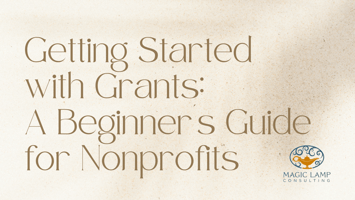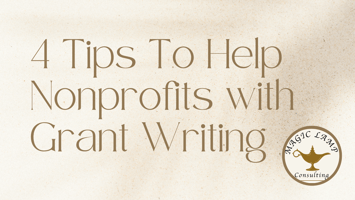Grant funding can be a game-changer for nonprofits looking to expand their impact and sustain their...
Beyond Google: Advanced Strategies for Effective Grant Research

When it comes to grant research, many nonprofit leaders start—and often stop—with a simple Google search. While search engines can provide useful information, relying solely on Google can mean missing out on crucial funding opportunities. Successful grant research requires a strategic approach, leveraging specialized databases, networking, and a deep understanding of funders’ priorities.
If your nonprofit is ready to go beyond the basics and refine its grant research process, these advanced strategies will help you uncover more relevant funding opportunities and increase your chances of success.
1. Leverage Specialized Grant Databases
Instead of relying on broad search engines, nonprofits should use dedicated grant databases that provide detailed funder information, application guidelines, and deadlines. Some of the most valuable platforms include:
- Foundation Directory Online (FDO) – A comprehensive resource with detailed profiles of U.S. foundations, past grant recipients, and funding trends.
- Grants.gov – The official source for federal grant opportunities across all sectors.
- Instrumentl – An AI-driven platform that matches nonprofits with grants based on mission and eligibility.
- GrantWatch – Lists available grants across various categories, including education, health, and social services.
By regularly monitoring these databases, nonprofit leaders can stay ahead of new opportunities and track trends in philanthropic funding.
2. Research Past Grant Recipients
One of the best ways to identify potential funding sources is by researching who has funded similar organizations in the past. Many foundations and government agencies publicly disclose grant recipients. Here’s how you can leverage this data:
- Review Foundation 990 Forms – U.S. foundations are required to file Form 990 with the IRS, which details their grantmaking activities. You can access these forms on sites like Candid or the IRS database.
- Analyze Annual Reports – Many nonprofits list their funders in their annual reports, which can give you insight into potential grant opportunities.
- Look at Press Releases – Funders often announce grant recipients through press releases, which can provide clues about their priorities and funding cycles.
Studying past grant recipients helps you understand which funders align with your mission and whether your nonprofit meets their criteria.
3. Build Relationships with Grant Funders
Grant funding isn’t just about submitting applications—it’s about building relationships. Foundations and grantmakers often prioritize organizations they trust and have engaged with before. Here’s how to establish meaningful connections:
- Attend Funders’ Webinars and Events – Many grantmakers host informational sessions about their funding priorities. Attending these events helps you gain insider knowledge and ask questions directly.
- Reach Out Before Applying – If permitted, introduce your nonprofit to potential funders before submitting a grant application. A brief phone call or email can help clarify eligibility and demonstrate your interest.
- Engage on Social Media – Many foundations share funding updates on LinkedIn and Twitter. Following and engaging with their content keeps you informed and on their radar.
- Leverage Board and Advisory Connections – Your board members or key stakeholders may have relationships with grant funders. Tap into their networks to establish warm introductions.
By fostering these connections, you increase the likelihood of securing funding and gaining insights into what funders truly value.
4. Use AI and Predictive Analytics for Grant Research
Technology is revolutionizing grant research. AI-powered tools can analyze trends and suggest the most relevant grant opportunities for your organization. Consider these tech-driven approaches:
- Predictive Analytics – Tools like Windfall and DonorSearch analyze donor and funder data to predict which organizations are likely to receive funding.
- Automated Deadline Tracking – Many grant platforms allow you to set alerts for upcoming deadlines, ensuring you never miss an opportunity.
By incorporating AI and automation into your grant research, you can streamline the process and focus on high-potential funding sources.
5. Collaborate with Other Nonprofits
Grant research doesn’t have to be a solo effort. Many nonprofits struggle with similar funding challenges, and collaboration can be a powerful way to uncover new opportunities. Here’s how to leverage partnerships:
- Join Grant-Seeking Coalitions – Many regional nonprofit associations and coalitions share grant leads and research tools.
- Engage in Peer Learning Groups – Connect with nonprofit leaders in your field to exchange insights about funders and grant experiences.
- Consider Joint Applications – Some funders prefer collaborative grant applications that demonstrate community-wide impact. Partnering with another nonprofit can make your proposal more competitive.
Working together not only enhances your grant research efforts but also fosters relationships that can lead to future funding opportunities.




